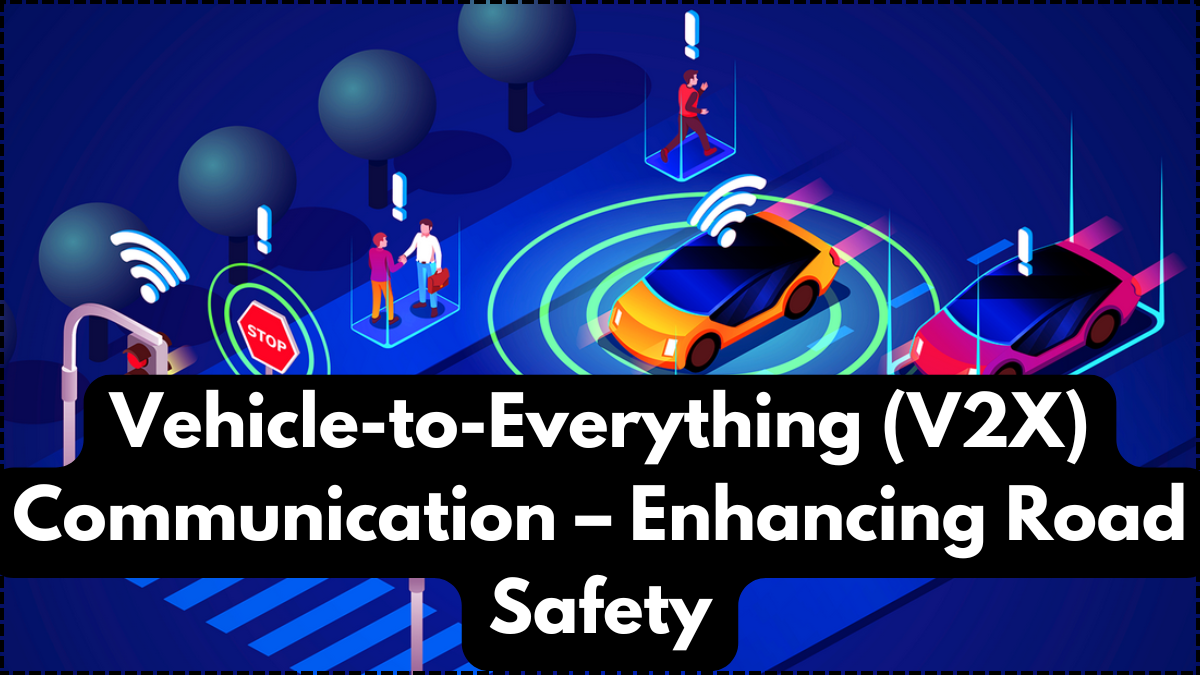Vehicle-to-Everything (V2X) Communication is rapidly reshaping the dynamics of modern transportation. At its core, V2X Communication is a network system enabling vehicles to communicate with their environment—be it other vehicles, infrastructure, pedestrians, or even the grid. In 2025, as cities grow smarter and traffic systems more complex, this exchange of information in real time is no longer a luxury but a necessity for proactive safety.
This digital connectivity not only empowers vehicles to anticipate road conditions but also enables predictive maneuvers, mitigating risks before they materialize. For instance, a connected vehicle approaching a blind intersection can receive signals from traffic lights or nearby vehicles about an impending hazard, allowing the driver or autonomous system to react instantly.

Key Components of V2X Communication
V2X encompasses several distinct communication types:
| Communication Type | Functionality | Example Use Case |
|---|---|---|
| V2V (Vehicle-to-Vehicle) | Alerts nearby vehicles about speed, location, or hazards | Preventing rear-end collisions |
| V2I (Vehicle-to-Infrastructure) | Syncs with traffic signals and road signage | Reducing wait times at red lights |
| V2P (Vehicle-to-Pedestrian) | Detects pedestrians via smartphones or wearables | Alerting distracted pedestrians or drivers |
| V2N (Vehicle-to-Network) | Connects to cloud services for data exchange | Updating navigation routes in real time |
This layered communication model is what enables the full potential of connected vehicles. Each type serves a different role in improving road safety, from hyper-local awareness to broader traffic pattern optimization.
The Road Safety Tech Revolution
The beauty of V2X lies in its preventative approach. Unlike conventional safety systems that respond to accidents, V2X aims to avoid them altogether. In real-world scenarios, this means vehicles can communicate slippery road alerts after rain, warn about sudden braking up ahead, or share live updates from emergency services.
Such integrations are increasingly standard in new vehicles, especially electric and autonomous models. In fact, several automakers now embed V2X modules in both high-end and mid-tier models, making road safety tech more accessible. With governments pushing for zero-fatality targets and Vision Zero strategies, V2X is fast becoming the cornerstone of national road safety policies.
Connected Vehicles: The Heartbeat of Smart Mobility
V2X is intrinsically tied to the evolution of connected vehicles. These vehicles are not just moving assets—they’re data hubs, sensors on wheels. When these hubs communicate, cities become responsive ecosystems where congestion, emissions, and accidents can be actively managed.
5G and edge computing further amplify this system’s capability. Data transfer rates are now fast enough to enable split-second decisions, essential for automated braking or evasive maneuvers. With cities like Seoul, Munich, and Singapore already deploying V2X corridors, the future is closer than it seems.
Overcoming Challenges and Looking Ahead
Adoption, however, is not without friction. Infrastructure costs, standardization issues, and data privacy concerns remain at the forefront. Despite these hurdles, the long-term benefits—fewer accidents, smoother traffic, cleaner air—far outweigh the transitional pains.
By 2027, industry analysts project that over 75% of all new vehicles will be equipped with some form of V2X capability. As regulation catches up and networks expand, V2X will shift from pilot projects to full-scale deployment.
Conclusion: V2X Communication is No Longer Optional
The shift to smarter, safer roads hinges on one thing—connectivity. V2X Communication isn’t just about technology; it’s about transforming the way we move, respond, and survive on the road. As connected vehicles become standard and road safety tech matures, V2X is no longer a futuristic concept—it’s today’s essential infrastructure.
FAQ
What is V2X Communication?
V2X Communication is a vehicle technology that enables cars to exchange data with other vehicles, infrastructure, pedestrians, and networks to improve road safety and traffic efficiency.
How do connected vehicles use V2X?
Connected vehicles utilize V2X to share and receive data in real time, helping to avoid accidents, reduce congestion, and respond more quickly to changing road conditions.
Is V2X technology available in all cars?
Not yet. While adoption is growing, especially in newer models, many older vehicles still lack V2X capabilities.
How does V2X improve road safety?
V2X allows for proactive communication, warning drivers about potential hazards and helping vehicles respond faster than human reflexes alone.
What are the future trends in V2X Communication?
Expect wider rollout with 5G integration, increased regulatory backing, and more partnerships between automakers and tech companies to make roads smarter and safer.
Click here to learn more